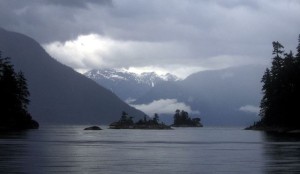 We live on the Pacific Northwest coast of Canada. By many accounts, our area was particularly hard hit by the radioactive fallout that came directly over to us, in the jet stream, from the triple meltdown and hydrogen explosions at the nuclear power plant at Fukushima Daiichi, Japan, in March of 2011.
We live on the Pacific Northwest coast of Canada. By many accounts, our area was particularly hard hit by the radioactive fallout that came directly over to us, in the jet stream, from the triple meltdown and hydrogen explosions at the nuclear power plant at Fukushima Daiichi, Japan, in March of 2011.
In Seattle, it was reported that the air was so contaminated after the accident that people were breathing in five “hot” radioactive particles a day!
The fallout was found to come down heavily in the rain that is so frequent in this rain forest we call home. Initially Simon Fraser University, in British Columbia, detected Iodine 131 in the rainwater on Burnaby Mountain They also found it in the seaweed on the shores of North Vancouver
Eventually we learned that the Air Monitoring Stations on Vancouver Island had picked up Radioactive Iodine 131 at levels 300 times higher than normal background.
A lab in Washington State found levels of radioactive xenon gas 40,000 times higher than normal levels.
So we knew the fallout had reached us. And we knew that there were at least 200 other radioactive substances that came along with the fallout from the nuclear plant accident. What we didn’t know was the level of contamination.
We learned that in California the tuna, milk, pistachios, naval oranges, prunes, wild mushrooms, strawberries, seaweed, beef, kale and spinach had been shown to be contaminated with radioactivity. However, having watched the jet stream patterns, we saw that our area in south western British Columbia was often missed by the atmospheric airflow from Japan.
After the initial study came out from Simon Fraser University, no more radioisotope studies were conducted by the researchers at that university So we set about trying to find out if anyone else was testing for radioactive fallout in Canada.
Health Canada and Canadian Food Inspection Milk Testing
We learned that in May and June of 2011, the Canadian Food Inspection Agency (CFIA) had collaborated with Health Canada (HC) and tested 34 samples of milk from the province of British Columbia.
On their website, they published the Cesium 137 findings as all “below detectible levels.” However their detection level was two becquerel/litre (Bq/l). Simply put, one becquerel is the activity of radioactive material in which one nucleus decays per second. This is a high detection level. In the U.S., Cesium 134 and 137 were being detected at levels as low as 0.05 Bq/l.
The detection level of 2 Bq/li is equivalent to 54 pCi/l because one becquerel is about 27 picocuries. Amazingly, the Canadian sensitivity level to this kind of deadly radiation is 1800 percent higher than the three pCi/l safety limit given for potable water in the United States. Regardless, the CFIA declared that all milk samples were “safe.” But a report that the Cesium levels were below this level of two Bq/l did not give us any comfort at all.
We found out that the reason the government tested milk is because milk is a special marker for radioactivity. Health Canada says that the analysis of the radionuclides in milk samples provides valuable information of the general population’s intake of radionuclides.
That is because, when there are environmental releases of radionuclides, the fallout goes into the air; falls on the grass and gets into the water; builds up in water and in the grass that then becomes hay. Cows ingest this contaminated water and hay. This is how the radionuclides “bio-accumulate” or increase in concentration as they go up the food chain.
The U.S. Environmental Protection Agency (EPA), also studies milk EPA states that ,“Milk is a reliable indicator of the general population’s intake of certain radionuclides since it is consumed fresh by a large segment of the population and can contain several of the biologically significant radionuclides that result from environmental releases from nuclear activities.“
We contacted Health Canada to find out if they had tested for any other radionuclides. The head of the National Monitoring Section of the Radiation Surveillance Division of the Radiation Protection Bureau of Health Canada was extremely helpful in answering all our questions.
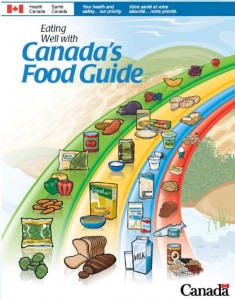 We found out that CFIA and HC did test 16 of the milk samples for Strontium 90 in May and June of 2011. Although they had not published their findings for Strontium 90, they were willing to provide the numbers when we asked them.
We found out that CFIA and HC did test 16 of the milk samples for Strontium 90 in May and June of 2011. Although they had not published their findings for Strontium 90, they were willing to provide the numbers when we asked them.
HC was able to detect Strontium 90 at levels as low as 0.0176 Bq/kilogram (kg – which is equivalent to the weight of a litre). Seven of the milk samples were below this level of detection. However they did detect Strontium 90 in 9 of the samples. The highest level found was 0.0435 bq/kg(1.175 pCi/kg).
In spite of this, CFIA and HC concluded that, “As expected, negligible levels of radioactivity were detected along the North American west coast.”
In fact, all levels of the Canadian government continue, to this day, to insist that our food and water is safe But how can say that when they haven’t done any testing since the summer of 2011? How can they say that when they have not tested any other local foods at all?
A very important fact is that the reactors that exploded and melted down at Fukushima have still not been brought under control. They are still giving off huge amounts of radionuclides every minute of every day. The Fukushima Diaichi nuclear power plant continues to be out of control almost two years after the catastrophe began
The plant continues to release massive amounts of radiation into the environment. As of December 27, 2012, according to TEPCO, the company that is running the Fukushima Diaichi plant, 10 MILLION Becquerels of Cesium 134 and 137 is still being released EVERY HOUR from reactors 1,2 and 3.
In February 2013, Dr. Helen Caldicott was quoted as saying:
“This crisis is far from over. Large radioactive releases into the ocean continue, and thousands of tons of radioactive waste are set to be incinerated in cities throughout Japan. And worst of all, Fukushima Daiichi’s building #4, which holds 100 tons of highly radioactive spent fuel, was seriously damaged during the earthquake and could collapse in another large quake. This would cause the fuel pool to burn, releasing even more massive amounts of radiation. All of these have profound medical and public health implications.”
Testing for two months in 2011 and then not doing anymore testing at all while the nuclear plants continue to release so much radioactivity into the environment, into the ocean, into the jet stream, all coming our way, does not seem the best action on the part of an agency whose mandate is the food safety of Canada.
As well, fallout can be very localized, so there is no way of knowing if Health Canada’s test results are reflective of our area’s fallout contamination. Sixteen samples in total, and only in 2011, in no way would be enough to collect the kind of data that would provide a clear picture of any ongoing bio-accumulation and increasing fallout contamination.
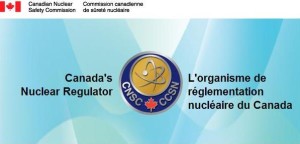 The Canadian government’s Radiation Protection Bureau needs to be testing food on the west coast of Canada every week at least as long as this Japanese catastrophe is still not under control.
The Canadian government’s Radiation Protection Bureau needs to be testing food on the west coast of Canada every week at least as long as this Japanese catastrophe is still not under control.
The bureau really needs to establish a regular system of monitoring our food. That way, when the next nuclear accident happens, they would already be measuring and have a baseline of current normal values. When another accident happens, they would immediately be able to determine if we are being affected.
It is unfortunate; to say the least, that Health Canada and the Canadian Food Inspection Agency stopped testing the local milk in the summer of 2011. If they were to test now, they may well find higher levels of contamination – as we did.
Our Results
After sending many emails and letters to the Canadian government and receiving no information and simply their assurances that we had nothing to worry about, it became clear that, if we wanted to find out if our food was contaminated or not, we had to send our own food samples into a lab certified to test for radionuclides.
Between November of 2011 and May of 2012, we sent six milk samples into the lab to be tested for Cesium 134, Cesium 137, Iodine 131 and Strontium 90.
Most labs in the United States were only testing for Cesium 134 and 137 as these are easily measured radionuclides that could indicate the presence of fallout from Fukushima.
Unfortunately, when we started receiving our sample results back from the lab, we realized that our lab had detection levels for Cesium 134 and 137 that were too high to clearly give us the information we need to truly find out how impacted we have been from the Fukushima fallout.
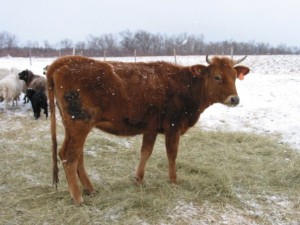 However, one clear result that we can report is that the lab detected radioactive Strontium 90 in the local milk.
However, one clear result that we can report is that the lab detected radioactive Strontium 90 in the local milk.
In the first two samples that we sent to the lab in the fall of 2011, no Strontium 90 was detected. The lab could only tell us the levels were below their relatively high detection levels of 0.2 Bq/l.
It is possible that in the fall of 2011, the cows had not started eating the post Fukushima 2011 hay crop. As well, it takes a while for the Strontium 90 to bio-accumulate up the food chain.
It is unfortunate that the detection level for the lab was so high at 0.2 Bq/l. As noted earlier, Health Canada’s lab was able to detect Strontium 90 at lower levels of detection (0.0176 Bq/l). Their equipment is clearly much more sensitive than the equipment at the lab we hired – a whopping 1,136% more sensitive!
Our testing lab’s equipment was not sensitive enough to detect the very small amounts of some radioactive fallout isotopes that can present a health issue, particularly in regards to children, and pregnant women.
If we had had a lab that was able to detect Strontium 90 at the levels possible in the Health Canada lab, we may have detected Strontium 90 in our milk earlier.
Nevertheless, by January 2012 our lab detected Strontium 90 at 0.3 Bq/l. By February 2012 the level detected had risen to 0.4 Bq/l.
In September 2012, we sent another sample of our milk to the same lab that had previously tested for and detected the Strontium 90. We received a call from the lab telling us that they had had an “explosion” because of the processing – get this – of our milk samples. They would no longer test our milk for Strontium 90.
We had to search for a different lab. We tried two other labs, not happy that their standards may be different or that we probably would not be able to compare results with those already obtained. Subsequent results from milk samples sent to the new labs in May 2012 and October 2012 showed that they were not able to detect Strontium 90 in our milk even though their detection levels were lower than those of our first lab.
We are not sure if the new labs are as good as the old one. Strontium 90 is difficult to detect. Possibly the new labs didn’t have the same ability to detect the Strontium as our original lab. Possibly the last two milk samples were from milk of a different dairy that may not have had any localized fallout. Six samples in 12 months is not enough to definitely say anything other than we know Strontium 90 was detected in the milk and we need to encourage the government to do regular testing.
It costs $400 to test each milk sample. Only the government has the kind of money needed to test our milk weekly.
Standards and “Acceptable Limits”
Canadian and American Standards for what levels of radionuclides are considered safe are quite different. The EPA Maximum Contamination level for Strontium 90 is 8 pCi/l which converts to 0.29 Bq/l The Canadian Standard is much much higher at 5 Bq/l.
 Canada has an even higher level of “action” following a nuclear emergency. According to the “Canadian Guidelines for the Restriction of Radioactively Contaminated Food and Water Following a Nuclear Emergency”, the action level from Strontium 90 is 30 Bq/l.
Canada has an even higher level of “action” following a nuclear emergency. According to the “Canadian Guidelines for the Restriction of Radioactively Contaminated Food and Water Following a Nuclear Emergency”, the action level from Strontium 90 is 30 Bq/l.
Thirty becquerels is the same as 810 pCi/l – over 100 times higher than the EPA Maximum Contamination Level. Does the Canadian government think that human beings can handle more radiation just because there has been an nuclear emergency?
But government standards of what is “acceptable” really have nothing to do with the issue. We always ask ourselves “acceptable” to whom”?
No matter what standard the governments use, it’s important to know that there is NO safe level of radioactivity. In 2006, the National Academy of Sciences’ National Research Council’s Committee to assess Health Risks from Exposure to Low Levels of Ionizing Radiation approved the Linear No-Threshold (LNT) model says that radiation is always considered harmful and has no “safety threshold.”
This means that when there is no radiation, there is no health risk. As soon as there is any radiation at all, no matter how small, there becomes a risk to health. There is no level low enough that will not increase the risk of cancer. As the level of radiation increases, so does the risk.
As well, the sum of several very small exposures are considered to have the same effect as one larger exposure.
It is clear that by January 2012, the level of Stronium 90 in our local milk, 0.3 Bq/l or 8.1 pCi/l had surpassed the U.S.’s EPA Maximum Contamination Level (MCL).
By February 2012, the level was even higher at 0.4 Bq/l (10.8 pCi/l) which meant it was 35 % over the EPA MCL.
In an email communication with the head of the National Monitoring Bureau of the Radiation Protection Bureau at Health Canada, when he was asked if Health Canada indeed stopped testing British Columbia milk for Strontium 90 on May 22, 2012 or had there been more tests, he replied:
“No more tests have been done or are planned. We are ready to resume testing if we have any reasons to believe Sr-90 might be a problem in BC milks.”
 Yet we believe our new tests provide reason to believe there may have been a spike in Strontium 90 in B.C milk after the Fukushima Daichi catastrophe, which has worsened.
Yet we believe our new tests provide reason to believe there may have been a spike in Strontium 90 in B.C milk after the Fukushima Daichi catastrophe, which has worsened.
We believe our test results will give Health Canada a reason to restart testing British Columbia milk. We have sent them our results and we are awaiting their reply.
We have written to them with our results and asked them if these results are enough reason for them to resume testing. We can only hope that a future article by Team EnviroReporter will announce a resumption of government testing.
To be sure, though, we are not holding our breath.
What Strontium 90 does to the body
Strontium 90 never occurs naturally. It is man-made by the nuclear fission reaction. Strontium 90 is a “bone seeker.” It mimics calcium and if a bone is deficient in calcium, it will take up Strontium 90 in place of the calcium.
But whereas calcium will make your bones strong, Strontium 90 gets deposited in the bones and bone marrow and causes bone cancer and cancer of the tissues nearby. It can also get into the blood and cause leukemia.
Strontium 90 decays by practically pure beta radiation. When beta particles are ingested, they penetrate cells at the molecular level and are so strong that they can actually change the structure of the molecules they strike. If the molecule it strikes is a DNA molecule, then it can cause a spontaneous mutation.
Babies and pregnant women are the most sensitive to the effects of radiation. If a pregnant woman is drinking milk that has radioactive Strontium 90 in it, the fetus will concentrate that radioactivity. If a woman who is breastfeeding is drinking radioactive milk, the Strontium 90 will concentrate in her breast milk and thus get transferred to her baby.
Young children are the next most affected. Young girls are more affected than young boys. Women are more susceptible to the effects of radiation than men.
Strontium 90 has a half life of 28.79 years so it will be around for about 290 years before it completely decays away to a nonradioactive and risk-free form. That is, any Strontium 90 you ingest and lodges in your bones will remain in your body, decaying away, for your entire life.
There is no question about it – Strontium 90 is a man-made poison that we should never have to consume.
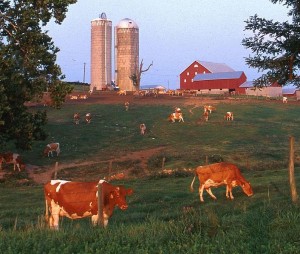 Knowing the grave damage Strontium 90 can do to a body, it’s a good idea to ask yourself– do I want any Strontium 90 in my body or the bodies of my children.
Knowing the grave damage Strontium 90 can do to a body, it’s a good idea to ask yourself– do I want any Strontium 90 in my body or the bodies of my children.
What do the levels mean?
The highest level we found in our lab tests post-Fukushima was 0.4 Bq/l .
0.4 Bq/l sounds like such a small number doesn’t it? Consider for a minute that one becquerel (bq) is one disintegration every second. One becquerel is defined as the activity of a quantity of radioactive material in which one nucleus decays every second.
Thus, when we say that radioactive Strontium 90 decays, we mean that its nucleus decays or disintegrates. As mentioned earlier, Strontium 90 decays by beta radiation and you have already read how damaging this type of decay is.
Our test results showed that for every litre of milk, there are 0.4 disintegrations every second.
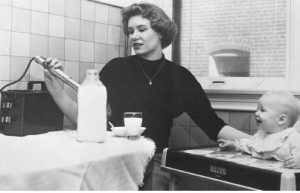 Every minute there are 60 x 0.4 disintegrations=24 disintegrations per minute. There are 1440 minutes in a day, so that one litre of milk will give off 34,560 disintegrations in a day. Many kids will drink that amount, and more, every day.
Every minute there are 60 x 0.4 disintegrations=24 disintegrations per minute. There are 1440 minutes in a day, so that one litre of milk will give off 34,560 disintegrations in a day. Many kids will drink that amount, and more, every day.
Studies have shown that 70-80% of that radioactive Strontium 90 is excreted. That leaves 7000 disintegrations in the body each day for the one litre of milk. Multiply that by 365 and every year there will be over two and a half million disintegrations in your child’s body.
After 15 years of drinking milk your child will have had 37 ½ million disintegrations alone going on inside the bones – after having excreted 80% of it. This will hugely increase the chance of developing bone cancer or leukemia.
And, after a nuclear event, this Strontium 90 comes along with about 200 other radioisotopes – all of which can cause gene mutations and cancer as well as many other ill health effects as they disintegrate away.
0.4 Bq/litre….such an innocent looking number……
Historical Perspective
In an attempt to put the Strontium 90 in our milk more in perspective, we tried to find out if anyone had tested for Strontium 90 before Fukushima.
Over 400 atomic ground weapons were tested beginning in 1945 and contaminated the atmosphere with radioactive fallout. Both the American and the Canadian governments started testing their milk supplies for Strontium 90 and Cesium 134 and 137 in the late 1950’s.
Health Canada’s Radiation Protection Bureau (RPB) set up 16 locations across Canada and tested milk every three months. The highest levels of Strontium 90 were found in 1964 at over 1.0 Bq/l. This is equivalent to over 27 pCi per litre or 338 percent higher than the EPA’s current Maximum Contamination Level.
The U.S. Environmental Protection Agency also tested for Strontium 90 in their milk during this time. EPA reported that the highest Sr-90 concentrations were seen in 1963, following the intensive nuclear weapons testing of 1961-1962.
Their graphs showed close to 160 pCi/l, equivalent to 5.9 Bq/l. These results were almost six times higher than in Canada, probably because the tests were done in the United States and thus Canada was further away from the fallout.
 We wanted to find out if and how this level of radioactivity affected the human population. Luckily, at the same time that the U.S. and Canadian governments were testing for the levels of the radionuclides in the food and environment, scientists set about trying to determine the effect of this never-before-seen nuclear fallout.
We wanted to find out if and how this level of radioactivity affected the human population. Luckily, at the same time that the U.S. and Canadian governments were testing for the levels of the radionuclides in the food and environment, scientists set about trying to determine the effect of this never-before-seen nuclear fallout.
The Baby Tooth Survey was started in 1958 by the Greater St. Louis Citizens’ Committee for Nuclear Information. This committee worked with Saint Louis University and the Washington University School of Dental Medicine. As a way of determining the effects of nuclear fallout in the human anatomy, they collected and examined the deciduous “baby” teeth of children for levels of radioactive materials absorbed into the teeth.
Ultimately, the researchers collected over 300,000 teeth before the study concluded in 1970. The study found that children born after 1963 had levels of Strontium 90 in their baby teeth that were 50 times higher than the levels found in children born before the large scale atomic testing began.
These results actually helped convince President John F. Kennedy to sign the Partial Nuclear Test Ban treaty with the United Kingdom and the Soviet Union.
Interestingly, in 2001, a set of 85,000 teeth from the project were uncovered in storage by Washington University. These teeth were given to The Radiation and Public Health Project which tracked 3,000 people who had participated in the tooth collection project In 2010 they published their findings in the International Journal of Health Science.
The results showed that the 12 children who later died of cancer before the age of 50 had levels of Strontium 90 in their stored baby teeth that was twice the level of those who were still alive at 50 years of age.
The U.S. EPA reported that, “after the majority of above-ground nuclear tests ceased in 1963, the Sr-90 level in pasteurized milk dropped sharply. Because other countries continued a small number of above-ground tests, the Sr-90 level reached a plateau rather than disappearing. Since the last above ground nuclear test in 1980, the Sr-90 in milk has steadily decreased as the radionuclide has decayed away.”
The Canadian Radiation Protection Bureau similarly reported that, “since the cessation of atmospheric nuclear weapons testing by treaty signatories in 1962, the values for Sr-90 have been steadily decreasing.”
But his means that Strontium 90 has been in our milk supply all along. And of course, this makes sense knowing now that Strontium 90 takes 289 years to completely disintegrate. It will decayed away completely sometime between 2233 to 2281.
Health Canada reports that by 1993, the level of Strontium 90 in Canadian milk was down to 0.055 Bq/l or 1.485 pCi/l. Vancouver milk was slightly lower at .051 Bq/l.
As a result of decreasing radiation levels, the Canadian milk sampling program was modified in 1994, to analyze commercial milk samples from Ottawa, Ontario. Ottawa, the nation’s council, is over 2,000 miles away from Vancouver B.C. in the east of Canada.
Overall, the Strontium 90 readings across Canada pre-Fukushima and up to 2011 were in the range of 0.03 to 0.09 Bq/l.
The last pre-Fukushima testing of milk in B.C. by the Canadian government was done in 1993. They tested four milk samples and found Strontium 90 in all samples at levels between 0.0314 and 0.0664 Bq/l.
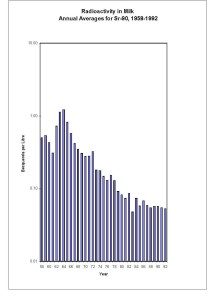 We found it quite shocking to discover that Strontium 90 has been detected in our milk supply since the 1950’s. We had never seen any warnings about this from Health Canada.
We found it quite shocking to discover that Strontium 90 has been detected in our milk supply since the 1950’s. We had never seen any warnings about this from Health Canada.
Health Canada started publishing Canada’s Food Rules in 1942. In 1961 they changed the name to Canada’s Food Guide. This guide outlines the amount and type of food recommended to “reduce your risk of…..cancer…..and contribute to overall health…..”
Milk intake recommendations range from a minimum of two to four glasses of milk a day. The recommendations did not change after the government started finding Strontium 90 in the milk supply.
The food guide includes these recommendations for children and pregnant and lactating women – those very people who are most susceptible to radioactivity.
The same government that is promoting milk has been testing for and found Strontium 90 in the milk. Is it the dairy industry lobby that has helped to ensure these recommendations?
Using the same calculations based on disintegrations per second as done previously, even the 0.0314 Bq/l found in 1993 from the weapons testing is an eye opener.
That is equivalent to almost 200,000 disintegrations going on in the body every year, with 200,000 more disintegrations being added every year – after the 80% is excreted.
The 0.0664 Bq/l found translates to about 420,000 disintegrations going on in the body each and every year – after 80% has been excreted No wonder there is a cancer epidemic out there
If Fukushima fallout has contaminated our milk supply, this has simply been an addition to the Strontium 90 that has always been in Canadian milk.
Did not the Canadian government want to at least make the Canadian public aware that this dangerous man-made radioisotope was being found in the milk we feed our children every day, that our pregnant women drink every day, that breast feeding mothers drink every day, and that bio-accumulate into their breast milk and pass onto their vulnerable babies – every day?
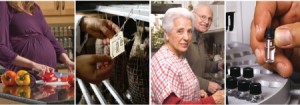 The public has the right to know.
The public has the right to know.
The government puts labels on cigarettes and warns of the danger to health. People have the right to know and the right to smoke cigarettes if they choose. People have the right to know what is in their milk and decide whether or not they want to drink it.
Could it be that the Canadian government’s involvement in the mining, processing and selling of uranium to other countries, its selling of nuclear technology to the world as well as its profiting from Canada’s own nuclear power plants and nuclear research reactors, makes it not want to draw attention to the dangers of radioactivity?
Earlier we noted that theFukushima Daiichi nuclear power plant continues to give off at least 10 million becquerels of Cesium 134 and 137 every hour. This means that over the almost two years that this crisis has been happening, there have been 10 million x 24 hours per day x 365 days per year x 2 years =175,200,000,000 disintegrations of Cesium 134 and 137 released to the atmosphere.
That goes along with Strontium 90 and 200 other radioisotopes all disintegrating and causing damage to the environment and the humans they come into contact with.
Canadians, Americans and citizens of this planet deserve better than this. To get to that better place happens because of the people and, sometimes, their governments.
The national anthem of Canada, “O Canada,” has lyrics that include “With glowing hearts.” Those lyrics can be taken literally in this Land of Milk and Strontium 90.
Failure to protect its citizens from the possible effects of Fukushima fallout is one of the Canadian government’s greatest and most easily addressed failings. Waiting for the federal government to actually act upon this information is a fool’s game.
A better course could be encouraging government officials and leaders to step up and face the unfortunate facts of Fukushima impacting our western shores. And, of course, carefully monitoring one’s diet and environment to lessen the dangers of this unprecedented, and ongoing, triple meltdown up-current from British Columbia.
Appendix of Our Strontium 90 in Milk Results
November 8/11 – Avalone skim milk – Organic
This month we sprung for the extra bucks and tested for Strontium 90 result: <0.2Bq/l November 8, 2012 – Avalone Whole 3.25% Homo Milk
Strontium 90 :<0.2 Bq/l January 4/12 – Dairyland Skim Milk
Strontium 90 0.3 Bq/l detectible and higher (detection level is 0.2Bq/l and the variation is +/- 0.2 )
February 8/12 – Dairyland Skim Milk
Strontium 90 0.4 Bq/l (detection level 0.2 Bq/l )
May 2012 – Dairyland Skim Milk (different lab #1)
Strontium 90 – below minimum detectible concentration of 0.039 Bq/l
October 2012 – Dairyland Skim Milk (different lab#2)
Strontium 90 – below minimum detection limit of 0.061 Bq/l 9 note detection level 100% higher)












To ‘Where’s the truth?’: Do you remember in the 1970s, Three-Mile-Island, in Pennsylvania, had a radioactive leak? Many, many people protested; their motto was, “NO MORE NUKES!” So, to clarify this for you, the American citizens do not give the gov’t. permission to continue using radioactive substances; the fact is, the gov’t. does what it wants regardless of what it’s citizens demand. Being in gov’t. at one time was a patriotic duty, but now it’s a business and the people pulling the strings are the largest corporations (the top 1% of the top 1%) and their lobbying groups. That’s where the term “Global Economy” originated; that’s why Europe formed the European Union; these corporations want to bring the entire globe under on ruling group. Ever see the movie, “Soilent Green”; well guess what, that’s what we’re all eating everyday because of the Industrialized farming, Industrial Feed lots, pesticides, herbicides, picking produce before it’s ripe then ‘GASING’ it before taking it to market, etc. Think about it; then put the blame where it belongs…not on the U.S. citizens…on the upper crust of the global corporations and the gov’t’s. that let them get away with crimes against humanity, nature, and life itself.
Do you think that maybe some of the radioactive exposure in the 1950s and 1960s could be, not just from testing above ground in the U.S., but also from the Canadian gov’t’s. involvement with uranium? It could just as well be that they covered up an ‘accident’, or deliberate act…who knows, right? Also, have you tested the produce for contamination as well? It would be interesting to know what results would turn up. Thank you for this indepth article; it was very informative and I learned stuff I didn’t know. Thank you.
In 1961, there was a fire and nuclear meltdown in Idaho at something called SL-1 that released huge amounts of radioactive contamination into the atmosphere, including Strontium 90. Now the thing of it is that at that time there was a huge dairy company called United Dairies Limited of Calgary, Alberta (now owned by Alimentation Couche-Tard Inc. in Laval, Quebec, Canada through a long series of transfers in ownership). They also had an ice cream division called Crystal Dairy in Medicine Hat, Alberta. through many above ground nuclear tests, fallout and processing contamination from nuclear weapons processing in the U.S. and the Northerly Chinook winds, many Albertans, especially the young and vulnerable ones were exposed to gene-damaging levels of radioactivity in the 1950’s and early 1960’s. In those days milk delivery to homes was common in Calgary, Lethbridge, and Medicine Hat. Many genetic defects and health problems have developed over the years in the young southern Albertans, including those of my eldest brother. The Dairy Industry of Alberta, The Government of Alberta, The Government of Canada, the Cancer Society of Alberta have all conducted a conspiracy of silence and coverup campaign of our exposures. The American Cancer Society Map of Radiation Exposure ends at the Canadian Border. Canada and Alberta have no such radiation exposure maps, in fact they are Deathly Silent on the matter.
Now one has to tell me that there is a high amount of radiation in our food or water as my pets go out and eat grass only to vomit blood after that and go into excruciating pain and not just that . I have noticed that some of my garden plants chard and other plants tasted like chemicals. We are all in big trouble.
@Sais Your comments are anecdotal and easy to logically pick apart. Let’s hear some real scientific analysis.
1) Why does the story need to talk about Fukushima? That is not necessary. You seem to be implying cherry picking.
2) How would those two 15 year old girls know about their health status of something so subtle? Did they have the appropriate tests performed on them? Where exactly did they live? It’s obvious that nuclear radiation sickness effects can take years to manifest so they may still be affected but not feel any symptoms. Unless you know the details, speaking generally can invalidate all your comments.
3) If you know anything about statistics, correlations, probabilities as it applies here, it does not imply any certainty about being dead at 50. That is your own faulty logic.
From your comments, you appear to be a naive believer in the power of science and that what is “known” is safe enough to trust. What you fail to realize is that there is more unknown than is known. Human knowledge is imperfect because nature is infinitely interdependent. We may know a few links in her chain, but most we are ignorant of. We’ve never had widespread radiation that is polluting entire oceans and large portions of the planet at these significant levels before. Nature is very nonlinear and interlinked and it is highly presumptuous of you to think that we can rely simply on what we presently know to judge the future in such an uncertain scenario. As has always happened in the past, as concerns drive investigation, new knowledge will reveal itself to show missing links of how nature works and our current models will then have to adapt.
Why has there been no mention of the radioactivity levels in the populated areas of Japan near Fukashima in this article or the following comments? I just had two Japanese 15 year old school girls stay in my Australian home for a week. They live about 30 miles from the reactor. No comments about ongoing emissions. They thought they lived far enough away to have no problems. Your story makes me even more sceptical. Your statistics suggest they will both be dead of cancer by 50! The stats were incomplete, e.g.no cancer risk. The logic of ceasing to eat radionucleotides, by ceasing to eat top of food chain,I.e.go vegan. was missed.
@mario – goats milk historically has had higher radiation readings than cows milk.
Thank you for this perfectly-written and informative article. Thank you also for your selflessness in testing the milk and sharing your results.
Your article makes it even more concerning that in 2009 the EPA signed off on Protective Action Guidelines whick allow a permissible 1,000-fold increase of Strontium-90 in drinking water!
http://www.commondreams.org/newswire/2009/01/21-0
Strontium-90 was also found in Florida rain as reported by an Enenewser.
Also, if anyone would like to see the EPA’s results for Strontium-90 in milk for your area, you can run a query here:
http://iaspub.epa.gov/enviro/erams_query_v2.simple_query
Out of curiosity, I ran a query for the western U.S. region for Strontium-90 in Pasteurized Milk from 1978-2013, and here is the result:
http://oaspub.epa.gov/enviro/erams_query_v2.simple_output?pStation=0&Llocation=EPA+Region&subloc=09&media=PASTEURIZED+MILK&radi=Strontium-90&Fromyear=1978&Toyear=2013&units=Traditional
I am heart broken at this event and all of the events of mass destruction I’ve witnessed and had the displeasure of reading about from in mankinds history. Japan has been the evil powers that be’s radiation playground for some time now. Sadly, we experience these disasters and pick up from where we left off and blindly carry on as though, ahh it’s halfway across the globe, it’s not in my backyard so no worries.
We (north America) will have many of the sins we consent to our government performing around the world come upon our heads tenfold because we do nothing to try and stop it. Continue to feed the beast and when you can no longer sustain it’s appetite, it will in turn feed upon the land and it’s inhabitants that gave it it’s power.
The British Government is going nuclear – rather than spend money on wind farms and wave power they prefer to join the happy band of profiteers who own the Nuclear industries. Does anyone know how to find out if we are also testing our milk etc and who do I write to to find out?
@Susan
Below is an initial response from an environmental lawyer answering my questions about using Dr. Busby’s petition approach.
************************************************
It appears to me that, in Canada, what would be required would be integration of the safety protocols into regulations under federal law. One can review a variety of current regulations on the Canadian Nuclear Safety Commission (CNSC) website (http://nuclearsafety.gc.ca/eng/lawsregs/index.cfm ). The creation of new regulations typically involves a level of lobbying and advocacy and requires a high level of persistence. Some non-government organizations in Canada (such as Sierra Club Canada http://www.sierraclub.ca ) have been involved in issues surrounding nuclear energy and may have some insight in terms of strategies.
Generally, a starting point would be to contact the CNSC and ensure that they have all the relevant evidence. Follow up meetings with the Commission might follow to outline the need and relevance of safety approach you are advocating.
In terms of bringing the matter forward to a domestic tribunal or court, I think there would be a need to find circumstances which are illustrative of the risks involved and to present the need for greater regulation, in that instance. This in itself would require significant monitoring and background work it seems to me as the EU is far more active on this front (or so it seems from my general awareness).
In terms of other alternatives, one can bring an environmental petition to the office of the Auditor General of Canada and the Commissioner of the Environment and Sustainable Development (a guide to this process can be viewed at http://www.oag-bvg.gc.ca/internet/docs/pet_lp_e_930.pdf ). Please see the example — http://www.oag-bvg.gc.ca/internet/English/pet_163A_e_28897.html . As you will note in the petition that is linked the applicant sought to establish whether the federal government viewed the Charter of Rights and Freedoms included a right to a clean environment (to which the government responded by avoiding an answer and claiming existing legislation protected the environment).
Back in the 1960’s and 1970’s, Canadians felt that their society was far advanced, in comparison with that of the United States, in terms of protection of the country’s citizens.
Fast forward to the 2000’s and pro-business Conservative Stephen Harper became Prime Minister and in that role is the person who selects those who manage Canada’s federal government. Prime Minister Harper’s interests are business, business, business. It’s very clear that it is not in the economic interests of Canada’s businesses that the Canadian government admit reality: That certain dairy or farming regions have been irreversibly harmed by Fukushima’s radiation, and that the continuing releases of radiation will make the harm to Canada’s dairy and growing regions and their businesses permanent. Since the Conservative Canadian government is unable to stop the continued nuclear contamination of parts of Canada due to Fukushima’s ongoing melt downs, the Conservative government simply decides to say nothing and do nothing, allowing Canadian businesses to continue to sell contaminated dairy products, and perhaps contaminated beef, to fellow Canadians.
As a result, a generation or more of Canadian children will be put at risk of the same sort of nuclear contamination caused illnesses found in Belarus and south west Russia as a result of the Chernobyl radiation.
Morally, pre-Harper Canada usually took the high ground and told the truth, even if the truth was painful and the problem difficult and long term.
It’s so sad that as to this critical public health issue, Canada’s federal and provincial governments have fallen to a new low…matching the reckless, callous conduct of the U.S. government.
“People have a right to know.” – on page 4
Some of us do know, but we had to look for it. No agency or government is going to stand up and say they were wrong.
The Nuclear Overlords and their servants are never going to say squat! …and they certainly aren’t going to ‘announce’ it via mainstream media to a large number of people who think Fukushima is done and over. That might cause panic.
Even worse… it might get people to thinking just how insanely dangerous Nuclear Power really is. …and they wouldn’t want that either.
Fantastic article! Just a correction: the biggest source of sr90 in foods and milk in the U.S. and Canada in the 1960s was not continental testing at the Nevada Test Site, but rather from high atmospheric fallout created by huge H-bomb tests in the Pacific and in Siberia. That 1960s fallout actually hit Canada much harder than the U.S. If you look at 1960s UNSCEAR reports, you’ll see that Canadian soils had 150-200% higher sr90 depositions than in the U.S., on average, and higher values in wheat, etc… Question: did the labs you worked with also test for strontium-89? Is there any reason you didn’t ask them to test for that isotope as well?
@ Marlo – as far as I know, no one has tested goat’s milk. However, this needs to be done. Peter Daley of The Food Lab has told us that goats milk concentrates radionuclides even more than cow’s milk. If you are drinking goat’s milk, I encourage you to send in a litre of it to a certified testing lab.
has anyone tested goat’s milk at all and has testing been done in the interior of b.c.?
David, we NEED your help! Chris Busby’s petition is very interesting. Also, going through the legal system has possibilities. It takes time, energy and money to get these initiatives going. Everyone needs to get active on this issue of our very survival.
Every reactor produces so much highly radioactive nuclear waste and there is NO WHERE to put it!!! Even without a disaster, every nuclear power plant is allowed to release radioactivity into the environment. When there is a disaster, it is a complete catastrophe – look at Japan – changed forever – contaminated land, sick and dying people, no end in sight.
We currently have a campaign started to close down the closest nuclear power plant to our home.
Everyone needs to find out where their closest nuclear reactor is located. Then they need to find out if there is a group working to shut it down. If there is, they need to JOIN IT! If there isn’t, they need to CREATE ONE!
As Jerry Mander and Ernest Callenbach said in the forward to the “must read” 2013 book “Nuclear Roulette” by Gar Smith:
“The situation is so grave that we should ….be camped out night and day in front of the legislative and regulatory bodies demanding the permanent end to any and every expression of this continued nuclear menace”.
I deeply appreciate the work that went into this informative report. I am grateful for the dedication of those who gathered the facts and I have shared the article as much as I can. While I live in Ontario, I have family in B.C. and I am concerned for all of us across the country and around the world. What a mess!
Thank you! What a loss for all of us and all life forms on earth! And the strange thing is that none of this
has to happen. We need nuclear like we need a hole in our head.
Three reflections.
1. Dr. Busby petition approach in Europe is an interesting way to have the governments there to look at the contanmination through a legal process. Can us Canadians do the same?
http://nuclearjustice.org/?p=50
2. Tony Merchant – lawyer – is representing former Chalk river workers in an class action lawsuit. Maybe he would be willing to take this on.
3. My MLA needs to see these lab reports along with a letter demanding change.
Please advise.